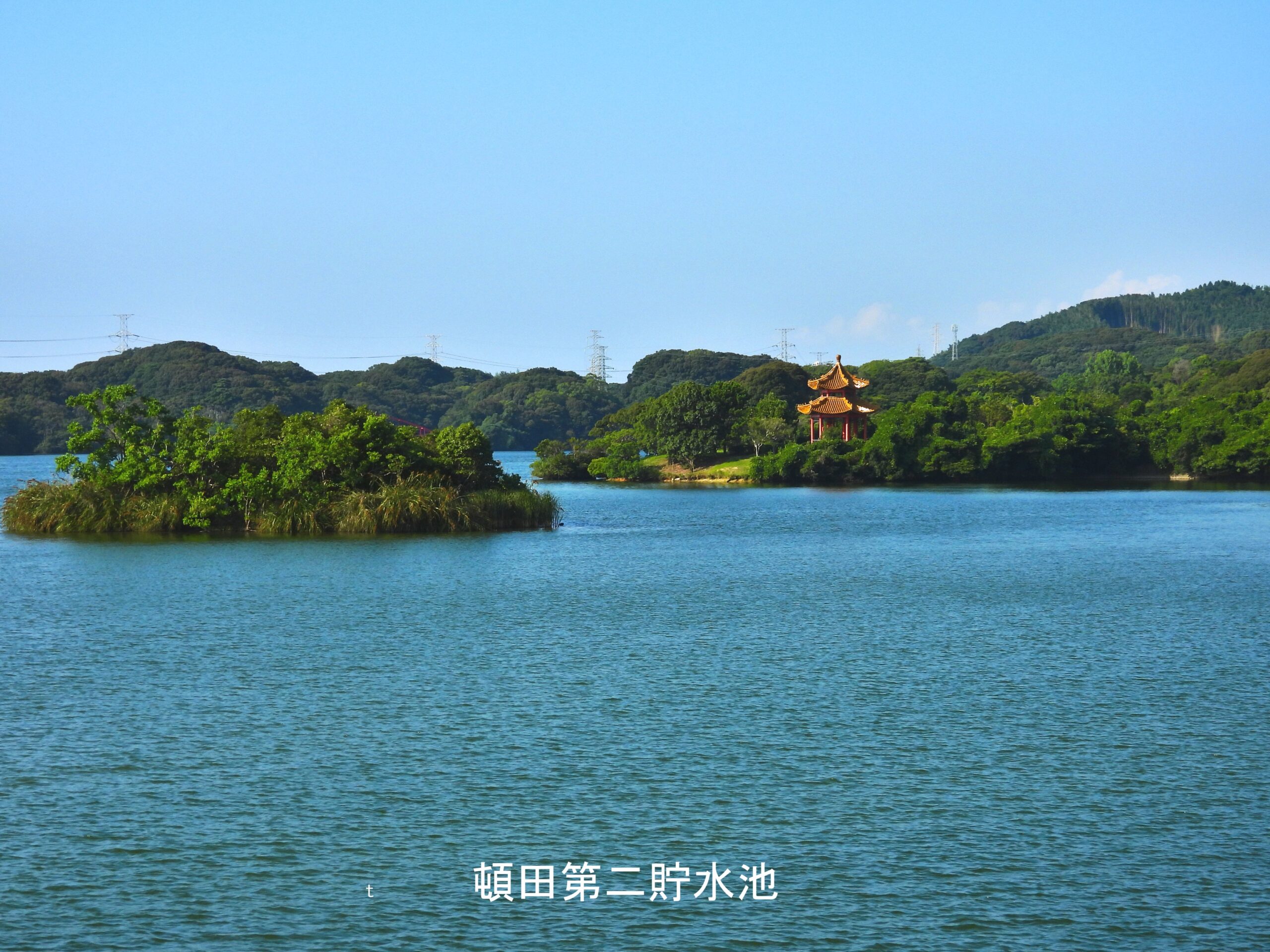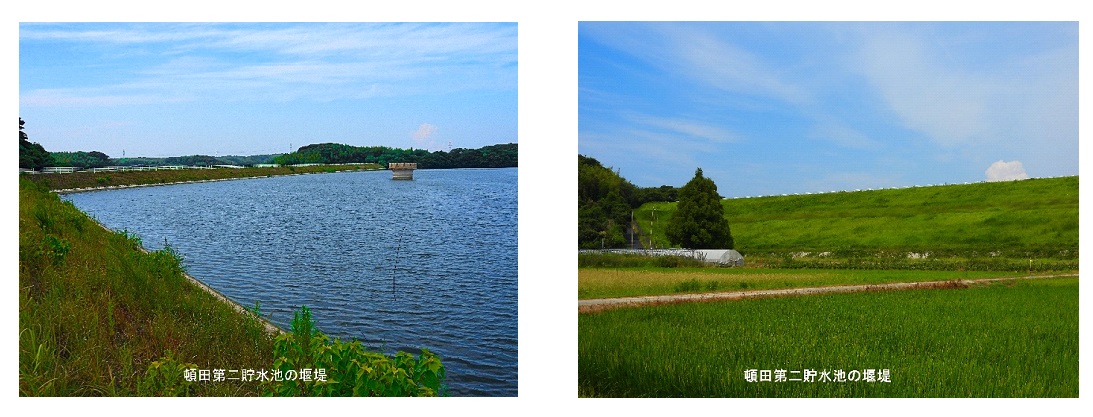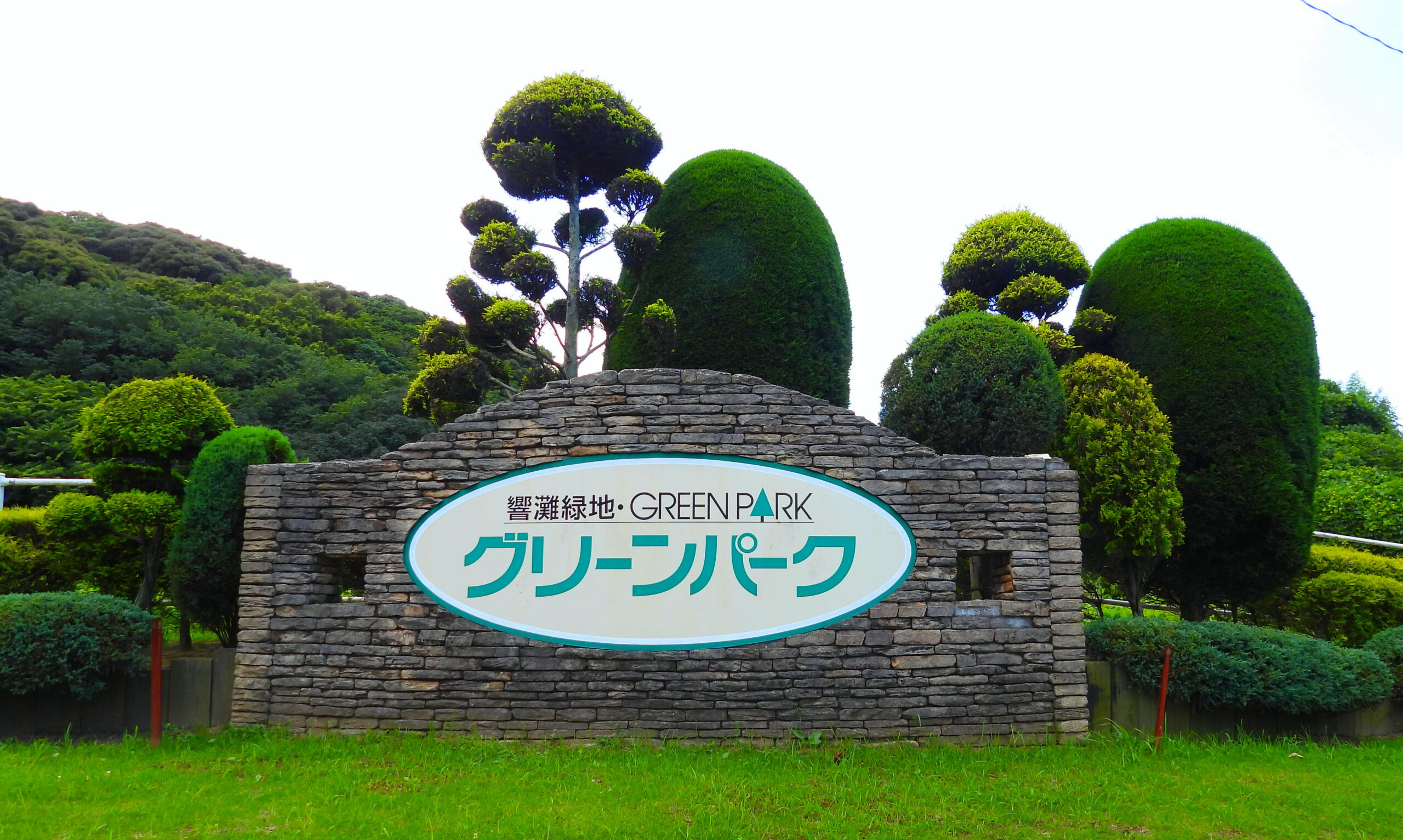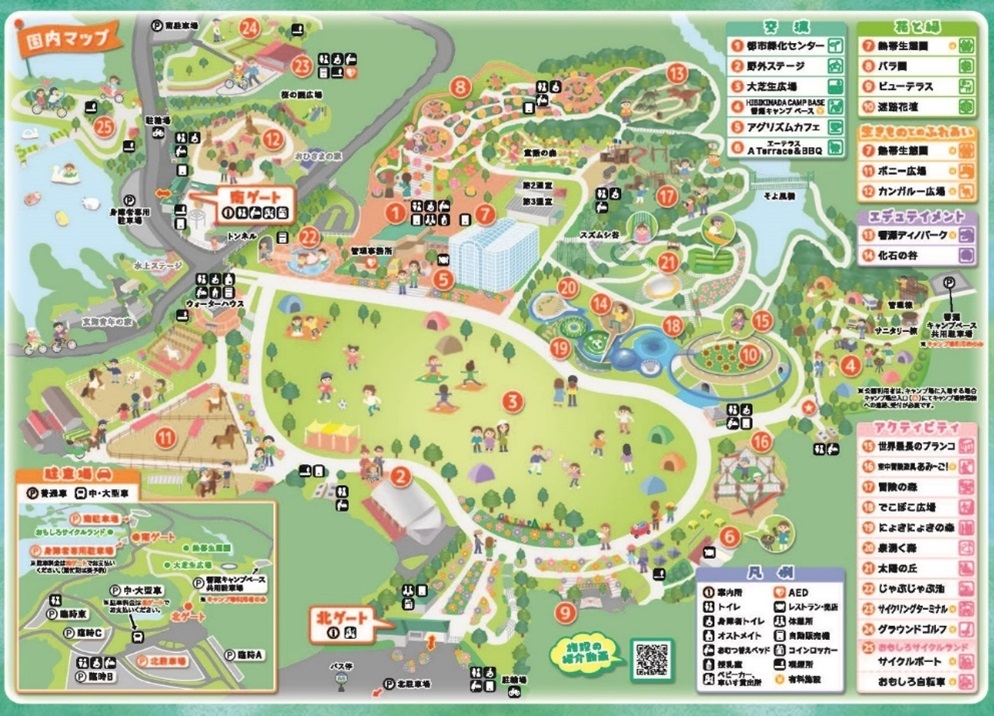Rediscovering the charm of Hibikinada Greenbelt
Feature PICK UP 若松トピックス

The Green Park and the area around Tonda Reservoir, which is filled with more than 9 million tons of water, are representative leisure spots in the Wakamatsu area. The total area is approximately 290 hectares. Located almost in the center of Wakamatsu Ward, this vast area is called Hibikinada Green Park, and many citizens enjoy it as a relaxing space where they can observe seasonal flowers and wild birds.
The 6.8 kilometer bicycle path winds through the thick growth of trees around the reservoir. Among the more than 20 species of wild birds that can be observed, whooper swans and mandarin ducks swim gracefully across the lake. At times, you can see a procession of turtles drying their shells on the rocks along the lakeshore.
Giant water jars built on the plain
Seventy-two years ago, a huge water reservoir appeared in a flat depression in Tonda. Construction of the Tonda Reservoir began in 1939 to secure water for the Wakamatsu area as the coal industry flourished and the population grew. After a hiatus during the war, the first reservoir, with a storage capacity of 3.1 million tons, was constructed in 1952. Later, a second reservoir was planned on an adjacent site to support the increasing demand for water. In 1969, the reservoir was completed with a total storage capacity of 9.15 million tons by further raising the weir.
There are ten reservoirs in Kitakyushu City. Most of them are located in mountainous areas far from the city center and store water flowing from the mountains. However, Tonda Reservoir, the only one located on a plain adjacent to the city, is a water source that stores river water pumped from the Ongagawa River, creating a valuable evergreen area.
The Onga River Isaza intake plant pumps approximately 60,000 tons of water per day. Once stored in the Tonda Reservoir, the river water is purified at the Honjo Water Treatment Plant before being pumped out as drinking water and industrial water. The area where water is delivered is centered on Wakamatsu, and the amount of water delivered is 60,000 tons per day. Therefore, Tonda’s water storage capacity is always near full.

However, the Tonda Reservoir, where miscellaneous domestic wastewater from the municipalities upstream of the Ongagawa River is mixed in, has become increasingly polluted with organic matter, and the shallow depth of the water has led to the deterioration of water quality, including blue-green algae blooms during the hot summer months. In particular, eliminating the musty odor caused by algae growth seems to have been a major issue.
In 2000, the Honjo Water Filtration Plant introduced an upward-flow biological contact filtration system (U-BCF) to prevent moldy odors, which has greatly improved the quality of water, and is now supplying high-quality and plentiful water for domestic use. In 2006, Kitakyushu City obtained a patent for this filtration device, which enhances the deodorizing function by fluidizing granular activated carbon.
Remnants of the coal industry on the weir
On the southwest side of Tonda Reservoir No. 2 is a paved weir about 400 meters long. This weir, which can be used as a cycling course and overlooks the entire reservoir, reflects the conditions of Wakamatsu at the time when the coal industry was flourishing.
In 1965, the city was planning to construct a third and fourth reservoirs in addition to the second reservoir to meet the increasing demand for industrial water. However, because this area was the hub of Nissan Chemical’s Takamatsu coal mine (later Nittan Takamatsu), “If the reservoirs are built, mining directly under and around them will have to be prohibited. This led to protests from the public, who said, “We want the reservoir to be located elsewhere.
Under these circumstances, discussions were held between the government and the parties concerned, and a consensus was reached to cancel the construction of the third and fourth reservoirs and to raise the first and second reservoirs in order to secure 3 million tons of industrial water.
The height of the reservoir was raised 3.6 meters to accommodate the amount of ground subsidence caused by coal mining, and a weir 21 meters high with an effective water depth of 15 meters was completed in March 1969. As a result, the effective storage capacity of the Tonda Reservoir increased by approximately 1.5 times the volume before raising the reservoir, creating a huge reservoir in the center of Wakamatsu Ward.
In 1971, Nittan Takamatsu closed its mine due to a change in the national energy policy, and the sinking of the weir due to coal excavation was avoided, which has continued to the present day. The Tonda Reservoir expansion project was indeed a turning point in the development of the Wakamatsu region.

Tonda Reservoir:https://wakaten.net/2023/822/
“Green Park” crowded with various events
Adjacent to Tonda Reservoir No. 1, Green Park attracts 500,000 visitors annually. The park covers an area of 196 hectares, one of the largest in the city. The park holds seasonal events under the basic theme of “water, greenery, and contact with animals. The rose garden, which boasts 2,700 roses of 450 varieties, holds “Rose Festivals” in spring and fall, and the world’s longest playground with 100 swings arranged in a circle and attractions such as Dino Park are available. The Hibikinada Camp Base, with its full range of activities, is also popular.

The “Urban Greenery Kitakyushu Fair” a pioneering large-scale event
Green Park was developed as one of the largest leisure spaces in the city on the site of the 8th National Urban Greenery Fair held in September 1991.
According to records kept at the time, during the 59 days from September 14, when the fair was held, the number of visitors reached 1.35 million, exceeding the initial target of 1 million. Despite being hit by two major typhoons during the period of the fair, it seems that the Greenery Fair was more successful than Kitakyushu City had ever experienced before.
Moreover, the success of the Greenery Fair provided an opportunity to showcase Kitakyushu’s attractiveness and potential nationwide. Kitakyushu has the second largest park area per capita of any ordinance-designated city, a coastline that is linked to the Ashiya Formation, where ancient fossils lie, and an abundance of water resources. The potential of Kitakyushu as a city of one million was also demonstrated by its research university city and the vast Hibikinada seaside industrial park.
In addition, the “Greening Fair,” which skillfully wove in the attraction of businesses, gave momentum to Kitakyushu’s internationalization policy. In March of the following year, the Junior Chamber International Asia-Pacific Conference (ASPAC) was held, bringing together 18,000 young people from 20 countries in the Asia-Pacific region for international conferences and events. It was also during this period that the “Asia Division of the International Bureau” was newly established in City Hall to expand exchanges with neighboring Asian regions
Inbound experiential tourism centered on Green Park
Today, more than 30 years later, Green Park has become a place of recreation and relaxation with seasonal events, such as the “Soap Bubble Day & Night Show” in May, the water play project in July, and the “Meat Festival with Kitchen Cars,” which attracts more than 10,000 participants.
In a user satisfaction survey for 2019 and beyond, more than 90% of visitors answered “satisfied,” and the various efforts to increase the level of attraction are highly regarded. However, in order to secure the number of visitors amid the declining birthrate and aging population, it will be necessary to devise ways to attract inbound demand in addition to conventional efforts.
Since the end of the Corona disaster, Korean visitors to Japan have accounted for 60% (1.92 million) of all foreign visitors to Kyushu, and the number of Korean travelers using Kitakyushu Airport has also increased. In this regard, it is desirable to develop experience-based tourism products for Korean visitors to Japan, centering on the Green Park and utilizing the tourism resources of the Wakamatsu area.

Green Park:https://hibikinadagp.org/








